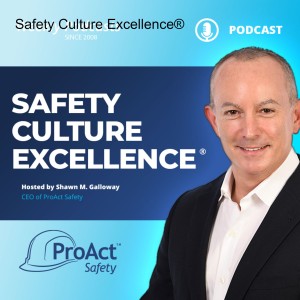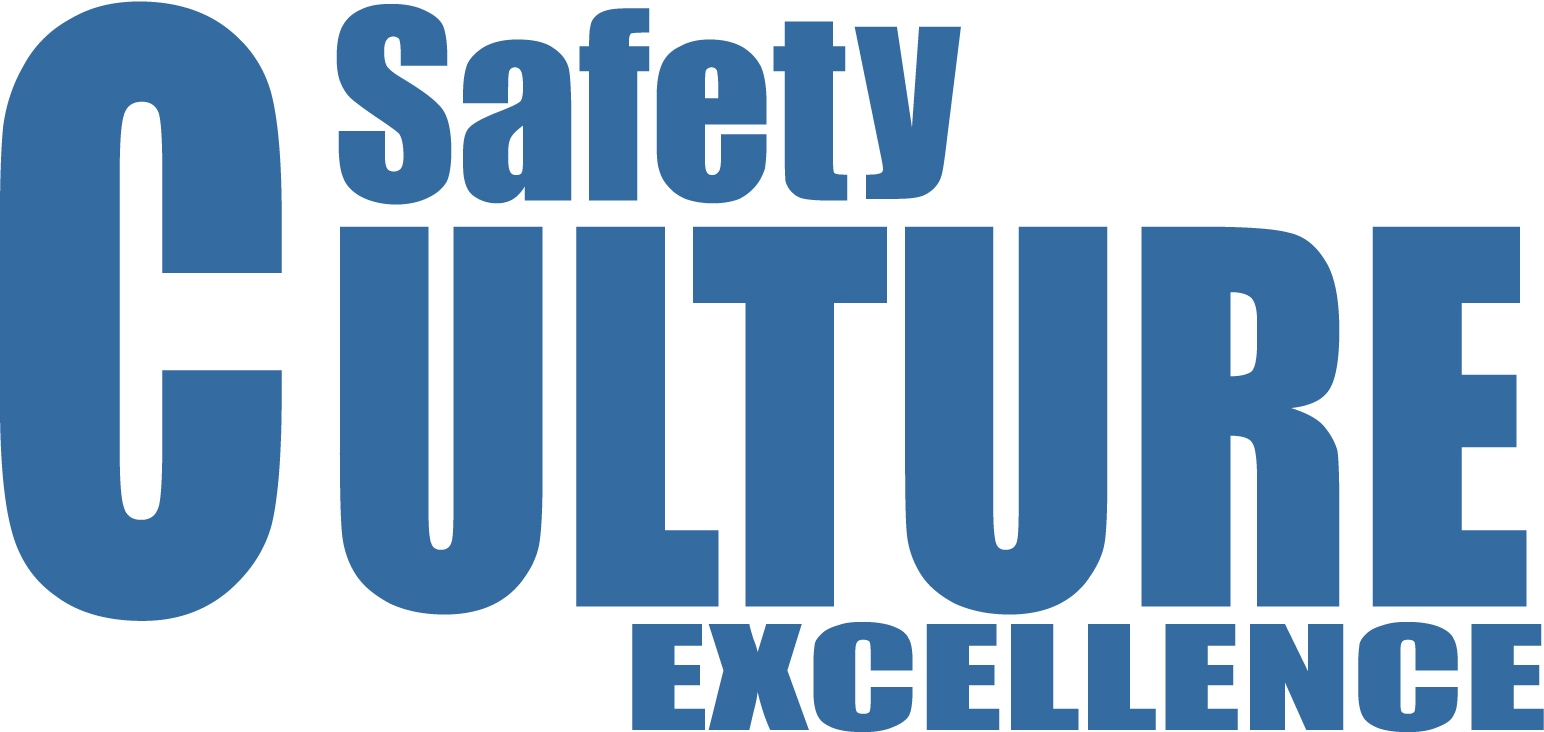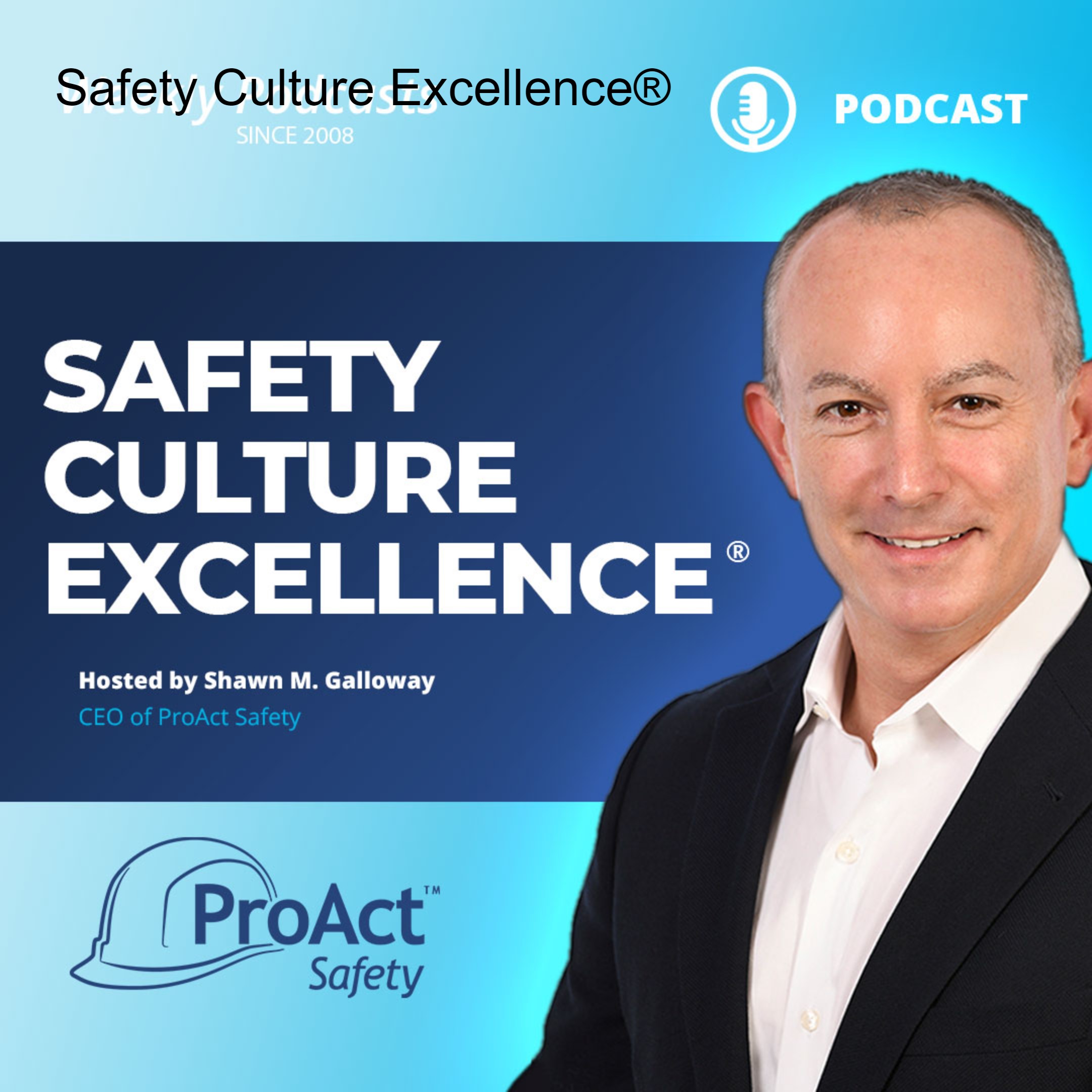Episodes

Monday Sep 09, 2013
306 - Overcoming invulnerability to strengthen safety culture
Monday Sep 09, 2013
Monday Sep 09, 2013
Greetings everyone, this podcast recorded while in Bethesda, Maryland. I’d like to share an article I wrote, published June 2013 in BIC Magazine. It was titled, Overcoming invulnerability to strengthen safety culture. The published article can either be found on the magazine’s website or under Insights at www.ProActSafety.com.
I hope you enjoy the podcast this week. If you would like to download or play on demand our other podcasts, please visit the ProAct Safety’s podcast website at: http://www.safetycultureexcellence.com. If you would like access to archived podcasts (older than 90 days – dating back to January 2008) please visit www.ProActSafety.com/Store. For more detailed strategies to achieve and sustain excellence in performance and culture, pick up a copy of our book, STEPS to Safety Culture Excellence - http://proactsafety.com/insights/steps-to-safety-culture-excellence
Have a great week!
Shawn M. Galloway
ProAct Safety, Inc

Monday Sep 02, 2013
305 - Sticky Stories are Safety Savvy
Monday Sep 02, 2013
Monday Sep 02, 2013
Greetings everyone, this podcast recorded while in Kissimmee, Florida. I’d like to share an article written by Terry Mathis, published May 2013 in EHS Today Magazine. It was titled, Sticky Stories are Safety Savvy. The published article can either be found on the magazine’s website or under Insights at www.ProActSafety.com. I hope you enjoy the podcast this week. If you would like to download or play on demand our other podcasts, please visit the ProAct Safety’s podcast website at: http://www.safetycultureexcellence.com. If you would like access to archived podcasts (older than 90 days – dating back to January 2008) please visit www.ProActSafety.com/Store. For more detailed strategies to achieve and sustain excellence in performance and culture, pick up a copy of our book, STEPS to Safety Culture Excellence - http://proactsafety.com/insights/steps-to-safety-culture-excellence Have a great week! Shawn M. Galloway ProAct Safety

Monday Aug 19, 2013
303 - Safety leadership happens in the middle
Monday Aug 19, 2013
Monday Aug 19, 2013
Greetings everyone, this podcast recorded while in Wisconsin Dells, Wisconsin. I’d like to share an article I wrote, published May 2013 in BIC Magazine. It was titled, Safety leadership happens in the middle. The published article can either be found on the magazine’s website or under Insights at www.ProActSafety.com. I hope you enjoy the podcast this week. If you would like to download or play on demand our other podcasts, please visit the ProAct Safety’s podcast website at: http://www.safetycultureexcellence.com. If you would like access to archived podcasts (older than 90 days – dating back to January 2008) please visit www.ProActSafety.com/Store. For more detailed strategies to achieve and sustain excellence in performance and culture, pick up a copy of our book, STEPS to Safety Culture Excellence - http://proactsafety.com/insights/steps-to-safety-culture-excellence Have a great week! Shawn M. Galloway ProAct Safety, Inc

Wednesday Aug 14, 2013
Creating a Sense of Urgency
Wednesday Aug 14, 2013
Wednesday Aug 14, 2013
For many years business strategists suggested that cultures benefited from what they called “Positive Urgency.” Experimentation and research had shown that a sense of urgency caused otherwise complacent workers to rally around a cause and produce higher levels of action toward goals. To accomplish this end, leaders were urged to create artificial emergencies to challenge workers. These were called “burning platforms” and were designed to produce stress and a sense of crisis.
Slowly leaders and their experts realized that what people really do on burning platforms is to escape, not solve problems. They also do not continue their emergency behaviors after the emergency is over. A sense of urgency only creates a culture change if it is sustained over time and does not kill the members with stress before they change. The experts are now calling for more lasting and important and less urgent and artificial stimuli to create the desired sense of urgency.
In safety, it has historically been tragic accidents or bad trends in accident frequency that have caused us to become positively urgent. We react to disasters in safety as we do in business, by rallying and taking significant action. However, just like in business, when the severity and/or frequency goes away so does the increased action. The challenge in safety is to find these long-lasting reasons for significant action even when accidents are not providing them. This is the way to proactive excellence.
In business, they have turned to building a sense of identity, not just action. What will the organization be remembered for and is it important? Safety must find its own identity also. What does this safety culture seek to become and does that identity inspire significant action toward excellence? The answer may be different for different organizations, but the right answers will not be found unless the right questions are asked.
-Terry L. Mathis
Terry L. Mathis is the founder and CEO of ProAct Safety, an international safety and performance excellence firm. He is known for his dynamic presentations in the fields of behavioral and cultural safety, leadership, and operational performance, and is a regular speaker at ASSE, NSC, and numerous company and industry conferences. EHS Today listed Terry as a Safety Guru in ‘The 50 People Who Most Influenced EHS in 2010, 2011 and 2012-2013. He has been a frequent contributor to industry magazines for over 15 years and is the coauthor of STEPS to Safety Culture Excellence, 2013, WILEY.

Monday Aug 12, 2013
302 - LIVE Our Own Health and Safety Advice
Monday Aug 12, 2013
Monday Aug 12, 2013
Greetings everyone, this podcast recorded while in Indianapolis, Indiana. I’d like to share an article I wrote, published May 2013 in Occupational Health & Safety Magazine. It was titled, LIVE Our Own Health and Safety Advice. The published article can either be found on the magazine’s website or under Insights at www.ProActSafety.com. I hope you enjoy the podcast this week. If you would like to download or play on demand our other podcasts, please visit the ProAct Safety’s podcast website at: http://www.safetycultureexcellence.com. If you would like access to archived podcasts (older than 90 days – dating back to January 2008) please visit www.ProActSafety.com/Store. For more detailed strategies to achieve and sustain excellence in performance and culture, pick up a copy of our book, STEPS to Safety Culture Excellence - http://proactsafety.com/insights/steps-to-safety-culture-excellence Have a great week! Shawn M. Galloway ProAct Safety, Inc

Monday Apr 22, 2013
286 - Understanding The Roles of Behavior In Safety
Monday Apr 22, 2013
Monday Apr 22, 2013
Greetings everyone, this podcast recorded while in Baku, Azerbaijan. I’d like to share an article I wrote that was published December 2012 in Occupational Health & Safety Magazine. It was titled, Understanding the Roles of Behavior in Safety. The published article can either be found on the magazine’s website or under Insights at www.ProActSafety.com. I hope you enjoy the podcast this week. If you would like to download or play on demand our other podcasts, please visit the ProAct Safety’s podcast website at: http://www.safetycultureexcellence.com. If you would like access to archived podcasts (older than 90 days – dating back to January 2008) please visit www.ProActSafety.com/Store. For more detailed strategies to achieve and sustain excellence in performance and culture, pick up a copy of our book, STEPS to Safety Culture Excellence, available through WILEY (publisher), Amazon or Barnes and Noble. Have a great week! Shawn M. Galloway ProAct Safety, Inc

Monday Apr 15, 2013
285 - The Transformational Leader - A ProAct Safety Workshop
Monday Apr 15, 2013
Monday Apr 15, 2013
Health, Safety, and Environmental (HSE) professionals face an increasing challenge, one that intensifies with each new hypercompetitive priority. It is little wonder why organizations strive to move safety from a priority to a value. To create these shared values within an organization, they must be reinforced at or near the point of decision. In principle, this always holds true. In practice, accomplishing this grows increasing difficult. Simply stating that safety is a value at an increasing frequency and passion does not make it so. The successful HSE leader of tomorrow cannot simply work towards value creation; they must become a transformational leader. Key Issues Addressed During Workshop • The challenges facing future HSE leaders • Redefining safety excellence • Transformational opportunities for further cultural and performance improvement for organizations already leading in safety efforts • Best practices of top performing organizations in safety and operational excellence • Strategies to self-diagnose for transformational opportunities within your organization that will put you onto the path to safety excellence • Proven elements of the safety culture excellence model and behavior of the best companies to sustain this desirable goal • How to engage employees in safety, solicit discretional effort, and create a workplace culture that is committed to sustaining safety excellence • Updated safety models and approaches that have resulted in millions of annualized savings • A review of the better practices of excellence cultures • A review of the elements of Safety Culture Excellence® For more information contact ProAct Safety at 936.273.8700 or info (at) ProActSafety.com For more detailed strategies to achieve and sustain excellence in performance and culture, pick up a copy of our book, STEPS to Safety Culture Excellence, available through WILEY (publisher), Amazon or Barnes and Noble. Shawn M. Galloway ProAct Safety www.ProActSafety.com

Monday Mar 25, 2013
282 - Formulas for Safety Excellence
Monday Mar 25, 2013
Monday Mar 25, 2013
Greetings everyone, this podcast recorded while in Soda Springs, ID. I’d like to share an article Terry L. Mathis wrote and was published November 2012 in EHS Today Magazine. It was titled, Formulas for Safety Excellence. The published article can either be found on the magazine’s website or under Insights at www.ProActSafety.com. I hope you enjoy the podcast this week. If you would like to download or play on demand our other podcasts, please visit the ProAct Safety’s podcast website at: http://www.safetycultureexcellence.com. If you would like access to archived podcasts (older than 90 days – dating back to January 2008) please visit www.ProActSafety.com/Store. For more detailed strategies to achieve and sustain excellence in performance and culture, pick up a copy of our book, STEPS to Safety Culture Excellence, available through WILEY (publisher), Amazon or Barnes and Noble. Have a great week! Shawn M. Galloway ProAct Safety, Inc

Monday Mar 04, 2013
279 - Incentives Rewards and Recognition - A ProAct Safety Workshop
Monday Mar 04, 2013
Monday Mar 04, 2013
Many efforts for improving safety performance include rewards or incentives. While the theory of incentivizing safety is well intentioned, the practice varies from effective, to ineffective, to harmful. Additionally, there are many new discoveries about how incentives and rewards really work and new thinking on how to best use them. If you already have a program of rewards or incentives for safety in place, don't suddenly stop it. This can do more damage than good. The best approach is to transition your existing program into a more effective program over time. The correct use of motivational strategies for safety is critical to the accomplishment of safety excellence in any organization. If you are like many companies, you have probably experienced widely differing results with many of the off-the-shelf programs available. Consolidating these various strategies into a coherent and effective set of best practices is becoming increasingly important because of the tendency of incentive programs to either fail or go horribly wrong. Some incentive programs have simply become a waste of resources because they have not improved motivation or performance. Others have done serious harm to the safety culture, to safety results, and to relationships with represented workforces. Avoiding these problems is possible by following some basic guidelines which is well worth the effort in terms of results. Improvements in the effectiveness of safety motivational programs is possible regardless of whether you have existing programs, past attempts, or have never tried. The guidelines shared in the workshop are designed to help make the best use of safety motivational strategies. For more information contact ProAct Safety at 936.273.8700 or info (at) ProActSafety.com For more detailed strategies to achieve and sustain excellence in performance and culture, pick up a copy of our book, STEPS to Safety Culture Excellence, available through WILEY (publisher), Amazon or Barnes and Noble. Shawn M. Galloway ProAct Safety www.ProActSafety.com

Monday Feb 18, 2013
277 - Leadership Safety Coaching - A ProAct Safety Workshop
Monday Feb 18, 2013
Monday Feb 18, 2013
Supervisors constantly communicate priorities and strategies to their workers, whether they intend to or not. With training, supervisors can take active control of the messages they send to promote safety as an organizational value. They can set levels of expectation that point everyone in the direction of safety excellence and exert a positive influence on the formation of safety culture.
Most supervisors don't have the latest training and tools for coaching workers to perform their jobs safely. Becoming an effective coach can leverage a supervisor's influence to make significant gains in accident reductions. Coaching skills also improve other areas of performance including quality and productivity as well as safety. The benefits to the organization impact almost every area of human performance.
The training contains the latest behavioral coaching techniques and directly applies them to improving safety. A model for counseling problem employees or addressing serious safety situations is also included. The design of the training utilizes advanced learning techniques and helps attendees to apply the models in the classroom to reality-based scenarios right out of the workplace.
For more information contact ProAct Safety at 936.273.8700 or info (at) ProActSafety.com
Shawn M. Galloway
ProAct Safety
www.ProActSafety.com
www.SafetyCultureExcellence.com

